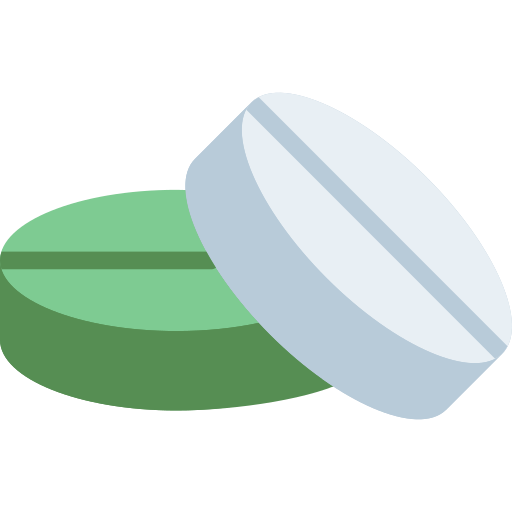
Ticlopidine Hydrochloride
250 mg
Drug International Ltd.
Product Details
Description
Ticlopidine is indicated to reduce the risk of thrombotic stroke (fatal or nonfatal) in patients who have experienced stroke precursors, and in patients who have had a completed thrombotic stroke. Because Ticlopidine is associated with a risk of life-threatening blood dyscrasias including thrombotic thrombocytopenic purpura (TTP), neutropenia/ agranulocytosis and aplastic anemia. Ticlopidine should be reserved for patients who are intolerant or allergic to aspirin therapy or who have failed aspirin therapy. Ticlopidine is also indicated as an adjunctive therapy with aspirin to reduce the incidence of subacute stent thrombosis in patients undergoing successful coronary stent implantation
The use of Ticlopidine is contraindicated in the following conditions: Hypersensitivity to the drug Presence of hematopoietic disorders such as neutropenia and thrombocytopenia or a past history of either TTP or aplastic anemia Presence of a hemostatic disorder or active pathological bleeding (such as bleeding peptic ulcer or intracranial bleeding) Patients with severe liver impairment
Diarrhoea, nausea, dyspepsia, bleeding, pupura, skin rash, increase in serum cholesterol concentration, elevation of LFTs, hepatitis, cholestatic jaundice.
Pregnancy Category B. Teratology studies have been conducted in mice (doses up to 200 mg/kg/day), rats (doses up to 400 mg/kg/day) and rabbits (doses up to 200 mg/kg/day). Doses of 400 mg/kg in rats, 200 mg/kg/day in mice and 100 mg/kg in rabbits produced maternal toxicity, as well as fetal toxicity, but there was no evidence of a teratogenic potential of ticlopidine. There are, however, no adequate and well-controlled studies in pregnant women. Because animal reproduction studies are not always predictive of a human response, this drug should be used during pregnancy only if clearly needed. Nursing Mothers: Studies in rats have shown ticlopidine is excreted in the milk. It is not known whether this drug is excreted in human milk. Because many drugs are excreted in human milk and because of the potential for serious adverse reactions in nursing infants from ticlopidine, a decision should be made whether to discontinue nursing or to discontinue the drug, taking into account the importance of the drug to the mother.
Patients with increased risk of bleeding from trauma, surgery or pathological disorder. Moderate to severe renal impairment. May need to stop therapy 10-14 days before elective surgery. Full blood counts should be performed prior to therapy and every 2 wk during the first 3 mth of treatment. Pregnancy.
Pediatric Use: Safety and effectiveness in pediatric patients have not been established. Geriatric Use: Clearance of ticlopidine is somewhat lower in elderly patients and trough levels are increased. The major clinical trials with Ticlopidine in stroke patients were conducted in an elderly population with an average age of 64 years. Of the total number of patients in the therapeutic trials, 45% of patients were over 65 years old and 12% were over 75 years old. No overall differences in effectiveness or safety were observed between these patients and younger patients, and other reported clinical experience has not identified differences in responses between the elderly and younger patients, but greater sensitivity of some older individuals cannot be ruled out. Renal Impairment: Dose reduction or discontinuance if haemorrhagic or haematopoietic complications occur. Hepatic Impairment: Severe: contraindicated.
One case of deliberate overdosage with Ticlopidine has been reported by a foreign postmarketing surveillance program. A 38-year-old male took a single 6000-mg dose of Ticlopidine (equivalent to 24 standard 250-mg tablets). The only abnormalities reported were increased bleeding time and increased SGPT. No special therapy was instituted and the patient recovered without sequelae. Single oral doses of ticlopidine at 1600 mg/kg and 500 mg/kg were lethal to rats and mice, respectively. Symptoms of acute toxicity were GI hemorrhage, convulsions, hypothermia, dyspnea, loss of equilibrium and abnormal gait.
Anti-platelet drugs, Fibrinolytics (Thrombolytics)
-
Support 24/7
Call us anytime -
100% Safety
Only secure payments